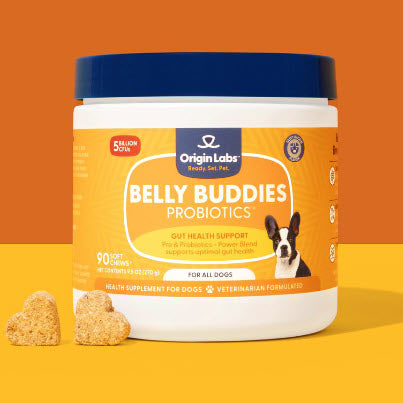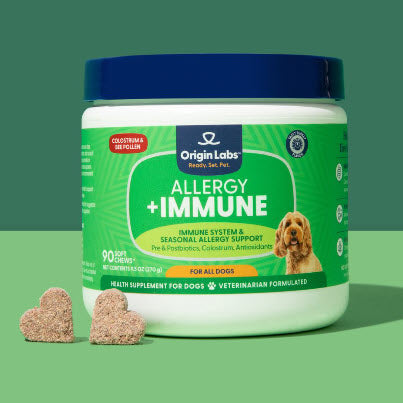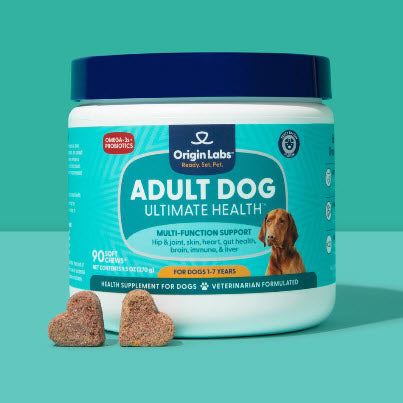Introduction
Pet owners often wonder if it's safe for their dogs to eat papaya. Dogs have different digestive systems than humans, so it's important to know which foods are safe for them. It's not just about safety though – we also want to make sure that what they eat is beneficial for them.
Feeding dogs the right fruits can be really good for them. Some fruits are packed with vitamins and antioxidants that can help improve their overall health. And one fruit that stands out in this regard is papaya.
Papaya has several benefits for dogs:
- Dietary fiber: It contains fiber that supports healthy digestion.
- Vitamins: Papaya is rich in vitamins like vitamin C and vitamin A, which are important for a strong immune system.
- Nutrients: It's also a good source of other essential nutrients like potassium and folate.
With all these nutritional benefits, adding papaya to a dog's diet in the right amounts could potentially improve their well-being.
But here's the thing – while it's tempting to share all kinds of fruits with our furry friends, we need to be careful. Not all fruits are safe for dogs, and even the ones that are can be harmful if not prepared properly.
In this article, we'll specifically look at whether papaya is safe for dogs to eat and how to feed it to them safely.
Understanding Papaya and Its Nutritional Composition
Papaya is a tropical fruit known for its sweet taste and vibrant color. It's used in salads, smoothies, desserts, and as a meat tenderizer because it contains an enzyme called papain.
Nutritional Value of Papaya
Papaya stands out as a rich source of essential vitamins and minerals:
- Vitamin C: One medium-sized papaya provides 118% of the daily recommended intake (DRI) of Vitamin C, which helps bolster immunity.
- Vitamin A: It also contains 33% of the DRI of Vitamin A, essential for maintaining healthy skin.
- Folate: With 14% of the DRI of Folate, papaya supports cell growth.
Benefits for Digestive Health
In addition to these nutrients, papaya is packed with dietary fiber. Medium-sized papaya holds about 5.5 grams of fiber. This can support digestive health in dogs by aiding regular bowel movements and reducing the risk of constipation.
Electrolyte Support
Another important nutrient found in papaya is potassium. This fruit contains about 360mg of potassium per medium-sized fruit which accounts for nearly 10% of a dog's daily requirements. Potassium is an essential electrolyte that supports proper muscle function and contributes to maintaining a healthy balance of fluids in a dog's body.
Conclusion
Papaya boasts a variety of beneficial nutrients that can contribute positively to your dog's health when included in their diet judiciously.
Can Dogs Safely Eat Papaya?
Dogs eating papaya is a topic that sparks curiosity among pet owners. It's essential to understand the potential risks and benefits involved in introducing a new food into their diet.
Veterinarians and pet nutrition experts confirm that dogs can safely consume papaya. However, this doesn't mean you can feed them as much as you want. Moderation is still important.
Benefits of Papaya for Dogs
The nutritional composition of papaya offers several health benefits for your furry friends, including:
- Vitamins and minerals: Papaya is rich in vitamins A, C, E, and K, as well as folate and potassium.
- Digestive aid: The enzyme papain found in papaya can help improve digestion and alleviate symptoms of indigestion.
- Anti-inflammatory properties: The antioxidants in papaya have anti-inflammatory effects that may benefit dogs with certain conditions like arthritis.
- Immune system support: The high vitamin C content in papaya can boost your dog's immune system.
Risks of Feeding Papaya to Dogs
While papaya is generally safe for dogs, there are some risks to be aware of:
- Choking hazard: The skin and seeds of papaya can cause choking in dogs, so it's important to remove them before feeding.
- Digestive upset: Too much papaya can lead to digestive issues like diarrhea due to its high fiber content.
- Allergic reactions: Although rare, some dogs may be allergic to papaya. Watch out for signs such as itching, swelling, or difficulty breathing after consumption.
Note: If your dog has any existing health conditions or dietary restrictions, it's best to consult with your veterinarian before adding papaya to their diet.
In the following sections, we'll explore these benefits and risks in more detail, helping you make an informed decision about whether or not to incorporate papaya into your dog's meals.
The Benefits and Risks of Feeding Papaya to Dogs
Feeding your dog papaya can offer numerous health benefits. This tropical fruit is packed with a variety of vitamins and minerals, including Vitamin C, Vitamin A, folate, and potassium. These nutrients work together to support your furry friend's overall health.
One of the standout components of papaya is the enzyme papain. Known for its digestive benefits, papain can help break down proteins and make them easier for dogs to absorb. This can lead to a healthier digestive system and potentially relieve common stomach problems.
Benefits of Feeding Papaya to Dogs
Here are some specific benefits that papaya can provide to your dog:
1. Digestive Aid
The enzyme papain in papaya can assist in breaking down proteins and making them more accessible for absorption in dogs' bodies. This can contribute to a healthier digestive system and potentially alleviate common gastrointestinal issues.
2. Immune Booster
Papaya contains a high concentration of Vitamin C, which is known for its immune-enhancing properties. This vitamin can help strengthen your dog's immune system and protect them from various illnesses.
3. Anti-Inflammatory Properties
Papaya has natural anti-inflammatory properties that may be beneficial for dogs with joint pain or arthritis. While it may not completely cure these conditions, including papaya in their diet could potentially provide some relief.
Risks of Feeding Papaya to Dogs
Despite its benefits, feeding papaya to dogs does come with some potential risks. Just like with any new food, some dogs may have trouble digesting it or develop allergic reactions.
Here are some signs that you should watch out for:
- Vomiting or diarrhea
- Excessive gas
- Loss of appetite
- Changes in behavior such as lethargy or irritability
If you notice any of these symptoms after feeding your dog papaya, it's best to stop giving them this fruit immediately and consult your vet.
Note: While papaya can be beneficial for dogs in moderation, it's important to remember that it should never replace proper veterinary care or prescribed medication. Any dietary changes should always be discussed with your vet first.
In the next section, we'll guide you on how to safely include papaya in your dog's diet. Offering practical tips and portion guidelines for feeding this fruit to dogs of different sizes, ensuring a positive experience for both you and your pet.
How to Safely Include Papaya in Your Dog's Diet
Ensuring the safety and health of your dog is paramount when introducing new foods into their diet. Papaya, when prepared correctly, can be a healthy treat for dogs. Below are some guidelines to help you include papaya in your dog's diet without complications.
Identifying and Managing Food Allergies in Dogs
1. Symptom Observation
Watch for signs of allergies when your dog tries papaya for the first time. Common symptoms include itching, hives, swelling, and digestive upset.
2. Introduce Gradually
Start with a small piece of papaya and monitor your pet for 24 hours for any adverse reactions.
3. Consultation with a Vet
If your dog shows any signs of an allergy, consult your vet immediately. Always discuss with your vet before introducing new foods if your dog has a history of food sensitivities.
Portion Guidelines Based on Dog Size
The size of your dog plays a crucial role in determining the right amount of papaya they can safely consume:
- Extra-Small Dogs (1-10 lbs): 1-2 small pieces
- Small Dogs (10-20 lbs): 3-4 small pieces
- Medium Dogs (20-50 lbs): 5-6 small pieces
- Large Dogs (50-90 lbs): 7-8 small pieces
- Extra-Large Dogs (90+ lbs): 10 small pieces or less
Remember, these are guidelines and should be adjusted based on individual dietary needs and activity levels.
Preparing Papaya for Dogs - A Step-by-Step Guide
1. Selecting the Right Papaya
Choose a ripe papaya; it should have yellowish skin and give slightly under pressure.
2. Preparation Steps
- Wash the Fruit: Rinse the papaya thoroughly under running water to remove any surface contaminants.
- Peel the Skin: Use a peeler or knife to carefully remove the skin as it could be difficult for dogs to digest.
- Remove the Seeds: Cut the papaya in half and use a spoon to scoop out all the seeds since they can be toxic and pose a choking hazard.
- Cut into Appropriate Sizes: Dice the papaya into small, bite-sized chunks suitable for your dog’s size to prevent choking.
- Serving Suggestion: Mix papaya pieces with your dog’s regular food or offer them as a special treat.
Always introduce papaya—or any new food—into your dog's diet gradually. Start with a small portion once and wait to see how they react before making it a regular part of their diet. Keep an eye out for signs of gastrointestinal distress such as diarrhea or vomiting, which might indicate that papaya doesn't agree with them.
Incorporating fresh fruits like papaya into your dog's diet can be beneficial but should always be done thoughtfully and under guidance from professionals when needed. With these tips on identifying potential food allergies, adhering to portion guidelines, and properly preparing papaya for dogs, pet owners can feel confident about offering this sweet tropical fruit as an occasional treat.
Other Safe Fruits for Dogs to Enjoy
Just as papaya can be a tasty addition to your dog's diet, so too can other fruits. While it's essential to remember that all fruits should be introduced gradually and served in moderation, here are some safe fruits for dogs that you might consider:
1. Apples
Not only are apples a rich source of dietary fiber but they're also packed with vitamins A and C. This crunchy fruit can serve as a low-calorie treat for your dog. To safely feed apples to your dog, ensure that you have removed the seeds and core - these parts of the apple contain cyanide which is toxic to dogs.
2. Bananas
Known for their high potassium content, bananas are another fruit that dogs often enjoy. They're also easy on the stomach, making them a suitable option for dogs with sensitive digestion. However, due to their sugar content, bananas should be served sparingly.
3. Blueberries
These small berries are powerhouses of antioxidants and can support cognitive function in dogs. They're also low in calories and high in fiber, vitamin C, and phytochemicals. You can even offer a few blueberries as a special treat or mix them into your dog's meals to provide additional nutritional benefits.
4. Watermelon
This hydrating fruit is an excellent choice during the summer months. Watermelon is packed with vitamins A, B6, and C, plus it's full of hydration - about 92% water! When serving watermelon to your dog, make sure you have removed all seeds and only feed them the flesh without the rind.
Each of these fruits has its own set of benefits and ways to serve them. As always, it's important to wash all fruits thoroughly before feeding them to your pet to remove any pesticides or chemicals on the skin. Also, remember that while these fruits are safe for most dogs, individual reactions may vary. Always monitor your dog when introducing a new food and consult with your vet if you notice any adverse reactions.
While the focus here is on papaya and other safe fruits, it's crucial to note that some fruits are not safe for canine consumption. For instance, grapes (and raisins) can be toxic to dogs and should always be avoided.
This list is not exhaustive, but it provides a good starting point for pet owners seeking to add variety and extra nutrients to their dog's diet in a safe and healthy way.
When to Consult Your Vet - Expert Advice
Introducing papaya or any new food item into your dog's diet should be done with care. Here are essential points for when a vet consultation is advisable:
- If your dog has pre-existing health conditions or specific dietary requirements, it's critical to discuss whether papaya is a suitable addition to their diet.
- Medication interactions are a possibility. Some components in papaya may affect how your dog processes certain medications.
- Dogs with sensitive stomachs or allergies might react differently to papaya. A vet can provide advice on introduction and monitoring strategies.
Seeking a vet's expertise ensures that the health benefits of papaya align with your dog's unique health profile and dietary needs. Vets can offer tailored recommendations considering factors like age, breed, health status, and current diet.
Remember, each dog is an individual with distinct nutritional needs. Professional guidance is key in ensuring that the incorporation of dogs papaya into their diet contributes positively to their wellbeing without causing unintended side effects.
Conclusion
Yes, dogs can have papaya. This tropical fruit is not only delicious but also packed with vitamins, minerals, and fiber that can contribute positively to a dog's health. It's important to remember that while papaya can be beneficial for your dog's immune system and digestion, it should not be seen as a magical solution for any existing health issues. Balance is key when incorporating fruits like papaya into their diet.
The world of safe fruits for dogs extends beyond papaya. Apples, bananas, blueberries, and watermelon are some of the many nutritious options that you can explore. Offering a variety of fruits can keep your dog's diet interesting while still providing essential nutrients. Still, it is critical to prioritize balanced meals that meet all of their dietary needs.
When introducing new foods, including papaya, into your dog's routine, always be mindful of their individual preferences and tolerances. Not every dog will react the same way to every food. Always start with small amounts and monitor your pet for any unusual behaviors or symptoms.
Remember, introducing new foods should be a fun and enriching experience for both you and your furry friend! So enjoy exploring the benefits of papaya for dogs together.
FAQs (Frequently Asked Questions)
Can dogs safely eat papaya?
Papaya can be safely consumed by dogs in moderation. It is important to remove the seeds and skin before feeding them papaya, and to monitor for any adverse reactions or digestive issues after introduction.
What are the benefits of feeding papaya to dogs?
Feeding papaya to dogs can provide nutritional benefits such as supporting their immune system and digestion. The presence of enzymes like papain and anti-inflammatory properties in papaya can also be advantageous for dogs with joint issues such as arthritis.
Are there any risks associated with feeding papaya to dogs?
While papaya can have potential health benefits for dogs, there are also potential risks or side effects such as digestive upset or allergic reactions. It is important to monitor your dog for any adverse symptoms after introducing papaya to their diet.
How should papaya be included in a dog's diet?
Papaya should be included in a dog's diet in moderation, with appropriate portion guidelines depending on the dog's size. It is important to prepare and serve papaya to dogs in a dog-friendly manner by removing the skin and seeds and cutting it into small pieces.
What are some other safe fruits for dogs to enjoy?
In addition to papaya, other safe fruits that can be incorporated into a dog's diet include apples (without seeds and core), bananas (in moderation), blueberries (as a treat or mix-in), and watermelon (without seeds and rind).
When should I consult a vet before feeding my dog papaya?
It is recommended to consult with your veterinarian before making any significant changes to your dog's diet, especially if your dog has underlying health conditions or is on medication that could interact with the components of the fruit.








